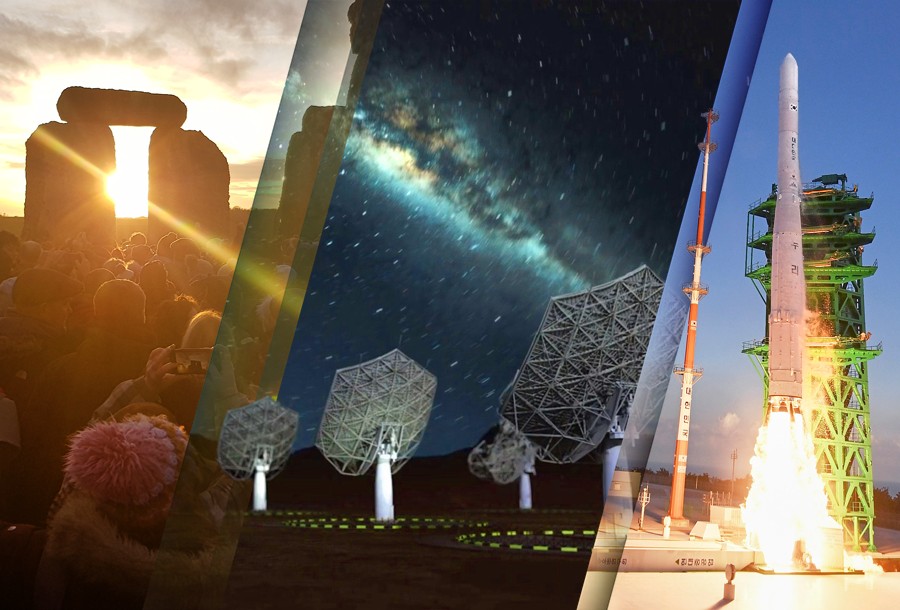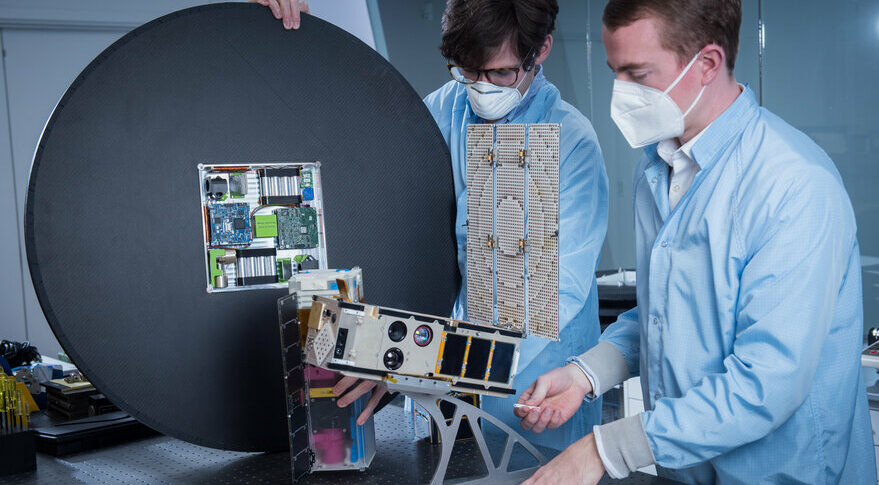Selection of the most interesting space news for breakfast: For the first time, specialists managed to fully refuel the SLS lunar rocket. NASA has allowed tests in orbit of circular satellites, and we tell you how to see the solstice with the naked eye.

NASA fully fueled the SLS for the first time
During the June 20 dress rehearsal for the launch of the SLS rocket, specialists of the Kennedy Space Center managed to fully refuel a superheavy carrier for the first time. However, due to a number of problems, they again failed to complete the test.
The test that took place on June 20 was already the fourth attempt to refuel the SLS with fuel (liquid hydrogen and oxygen). The previous three tests, which took place in April 2022, were never completed due to various technical problems related to both the mobile launch platform and the rocket. Because of this, engineers had to return the SLS to the Vehicle Assembly Building to service the replacement of faulty components. After the repair was completed, the rocket was re-installed on the launch pad to continue testing.
Fire destroyed four buildings of the Kitt Peak Observatory
Severe wildfires raging in Arizona have reached the top of Kitt Peak, which is home to the observatory of the same name. The fire destroyed four buildings that were not used for research, and created a threat to the main complex where the telescopes are located.
Advantages of satellite monitoring in crop production
The debatable issue of Ukrainian agro during the war is at the time of the introduction of precision farming technologies. It is clear that everyone today is forced to save and save better: money or resources? Since the introduction of precision farming technologies is not cheap, we conclude that in order to save money, we have to spend. The peculiarity of satellite monitoring is that it is one of the most accessible tools for optimizing agricultural production.
Earth remote sensing satellites provide valuable information for analyzing the state of crops and plant growth conditions. Dmytro Svyrydenko and Vitalii Vyshniak, business development managers of EOS Data Analytics, talked about the use of satellite data in agro.
Market News

Satellites in the form of disks to launch into space
NASA has allowed the testing of DiskSat satellites in orbit, which have the shape of a flat disk. This form will allow them to be more economical and will facilitate the location in orbit. Aerospace Corp. has agreed with NASA its DiskSat satellites in 2024. Each of these devices is a disk with a diameter of 1 m and a thickness of only 2.5 cm. They are put together in a block that allows them to separate at a certain point in time.
South Korea successfully launched a rocket of its production
On the morning of June 21, South Korea successfully launched a Nuri rocket of its production. This allows it to launch reconnaissance satellites into orbit and develop new projects. The Nuri rocket is a three-stage liquid-fuel carrier. It was first presented to the public last summer, and in October the first successful launch took place. Then the mock-up of the cargo was launched to an altitude of 700 kilometers, but it did not have sufficient orbital speed and fell near the coast of Australia.
Epsilon3 raises $15 million for space project management platform
Software startup Epsilon3 said June 20 it has raised $15 million to expand its suite of space project management solutions. Existing investor Lux Capital led the Series A funding round to support Epsilon3’s web-based platform, which provides collaboration tools that are tailor-made for spacecraft manufacturing and operations.
Sierra Space signs agreement for Dream Chaser landings at Spaceport America
Sierra Space will work with Spaceport America in New Mexico to use that commercial spaceport as a potential future landing site for the company’s Dream Chaser vehicle.
Sierra Space announced June 21 it signed a memorandum of understanding with Spaceport America to study landings of Dream Chaser vehicles at the spaceport’s 3,650-meter runway. That includes jointly working on an application to the Federal Aviation Administration for a reentry site license to allow landings there.
Arianespace to launch MEASAT-3d + GSAT-24 satellites on June 22nd
Arianespace’s second launch of 2022 — the first Ariane 5 of the year — will place the MEASAT-3d and GSAT-24 satellites into geostationary transfer orbit (GEO), with the launch occurring from Kourou, French Guiana. The launcher will be carrying a total payload of approximately 10,863 kg.
ESA boosts the satellite-enabled 5G media market
Today ESA signed an agreement to work with the European Broadcast Union – an alliance of public service media organisations – that will enable Europe to gain a lead in media content delivery as well as maintaining its technical autonomy.
Today’s agreement – called 5G Emerge – is a partnership between ESA and the European Broadcast Union plus 20 companies from Italy, Luxembourg, the Netherlands, Norway, Sweden and Switzerland.
Under the agreement, the partners will define, develop and validate an integrated satellite and terrestrial system based on open standards to efficiently deliver high-quality content distribution services. The system will leverage on the structural advantages of satellite-base infrastructures combined with the flexibility of 5G and beyond 5G technologies to reach anyone and anywhere.
Interesting

How to see the solstice with the naked eye (article)
Every year on June 21, thousands of people come to the English town of Salisbury and head to one of the most famous historical buildings of the British Isles — the Stonehenge near-horizon Observatory. There they wait for the dawn to make sure once again: the Sun rises on the day of the summer solstice at exactly the point that our ancient ancestors “marked”.
Astronomers link 64 telescopes to observe the structure of the universe
An international team of astronomers have for the first time combined the power of 64 radio telescope dishes to detect the faint signatures of neutral hydrogen gas across cosmological scales. The feat was achieved using the South African-based MeerKAT telescope, a precursor to the world’s largest radio observatory, the SKA Observatory (SKAO), which will probe the universe in unprecedented detail.
Follow us on Twitter to get the most interesting space news in time
https://twitter.com/ust_magazine

